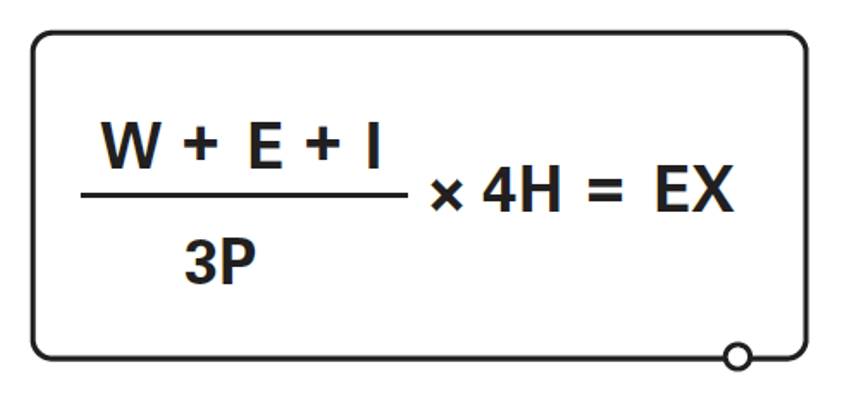The areas of wellbeing, engagement, and inclusion (WEI) have perplexed organisations for a great many years. However, emerging from the other side of an 18-month traumatising pandemic, the impact of Covid-19 on WEI is palpable, says David Liddle
In an increasingly divided society, where diversity is a cause of adversity, quarrels turn toxic so quickly, blame, shame and punishment seem to be the primary source of justice and accountability comes from 120 characters or less, the need to double our efforts to promote wellbeing, engagement and inclusion has never been more urgent.
As a mediator, I’ve stood in the metaphorical basement of organisations clearing up messy conflicts hundreds of times, looking upwards to understand what went wrong. The truth is that often I am faced with people who are depressed, anxious, or even suicidal. Conflict resolution specialist, mental health expert and award-winning mediator Marie Coomes explains, “conflict resolution and wellbeing, engagement and inclusion are inextricably linked. In every case I have dealt with, WEI is damaged due to how conflict has been handled, with the most significant impact often on an employee’s psychological safety.”
Yet ironically, most wellbeing, engagement or inclusion strategies do not mention conflict management or reference that people experience mental health issues as a direct result of the way they are being treated. It’s no wonder that Gallup’s State of the Global Workplace found that UK and western Europe have the lowest engagement levels across the globe, at just 11%, and that global worry, stress, sadness and anger are on the rise. I have a joke that I tell when I speak at conferences about this stuff – I have seen better strategies for ordering paperclips than I have for resolving conflict at work. The only problem being that this is no laughing matter. According to the latest report for Acas by Professor Richard Saundry and Professor Peter Urwin, the total cost of annual conflict to UK organisations is £28.5 billion GBP.
The current way we think about wellbeing, engagement and inclusion within our organisations is not working. Yet the impact of Covid-19 on our mental and physical health, the rise of social and employee activism and the increased focus on employee experience have made these areas of the workplace some of the most discussed and hotly debated topics of our times. Our organisations have been administered a systemic shock, meaning they now have the chance to be part of a big, very exciting conversation about what it means to be a human being in a modern, 21st Century organisation.
A systemic approach to WEI
In my new book Transformational Culture, I suggest that by combining WEI as a single strategic narrative within our organisations, we achieve a much clearer focus on employee experience, contributing to a transformational culture. A culture which puts its purpose and its people first.
It is not rocket science to work out that a happier, healthier, and harmonious workforce leads to high performance and better employee experience. There is a clear interface between an inclusive workplace, where people can shine and be brilliant, supported by their managers, feeling enhanced levels of engagement as a result. However, the commitment to delivering a great human and employee experience coupled with a world class customer experience requires planning, resourcing, and dedication. It requires unflinching leadership to ensure that wellbeing, engagement, and inclusion become and remain a central focus for the organisation.
It also requires systems-based thinking, rather than the one-size fits all, siloed approach, which is sadly all too common (particular within HR departments which rely on reductive and reactive processes to resolve complex people issues). Organisations currently watch the three elements of wellbeing, engagement and ED&I swimming down separate lanes and invest money and resources into each, without stepping back to look at them in their totality. They analyse predictable annual employee engagement results and ask, “why aren’t you engaged?” rather than taking a wider systemic look at the entire organisation and causal factors around managing conflict, having quality conversations about performance, creating psychologically safe and inclusive work and project teams, or dealing with mental health challenges in a joined-up way.
Working with many organisations, I observe leaders and managers perpetually flitting between disparate operational issues, rather than seeking a deep understanding of the root causes and strategic impacts of those issues and an understanding of the connections between them. As one lever is pulled, due to lack of integration with the other two, this has a detrimental impact on all three, rendering each less effective and less successful.
Shakil Butt, HR consultant and leadership professional explained to me that for inclusion to have any significant impact it must be also treated as a core strategic priority: “systemic issues that lead to marginalisation are multi-layered and complex, so simple fixes will not work and the complete employee journey, the product and service and wider ecosystem all need to be considered to bring about meaningful change.”
There is no magic bullet or simple answer to the big questions of improving employee wellbeing, engagement, and inclusion. If there were, organisations would have solved the WEI puzzle long ago. The emergence of employee experience (EX) is a step in the right direction, however unless EX can actively address the wider issues of WEI it could easily just become another business fad. That is why I our organisations must, as a matter of extreme urgency, become so much better at measuring the visible and the invisible forces which connect wellbeing, engagement, and inclusion.
The Employee Experience (EX) Equation
As alluded to earlier, there is also a gaping absence of strong data and metrics around each element of WEI. Where data and metrics are gathered, they are often misaligned, and the issues of causation and correlation entirely unclear. Importantly there is a need for not just measuring impact of initiatives but to triangulate the impact against the other two elements. If our organisations are going to truly ‘build back better’, developing a systematic and ongoing use of data to develop and deploy a WEI strategy should be at the top of the inbox of every leader and people professional.
My Employee Experience (EX) Equation below offers a solid starting point to generate dialogue and a big conversation in our workplaces and for any organisation which is wondering where to begin:
To summarise – if you look at company’s combined efforts around WEI, divided by impact of policies, processes and performance in the organisation (3Ps), then multiply this by the efforts of local managers to create a happy, healthy, harmonious, and high performing workplace (4Hs), the result is employee experience.
I’m not advocating an algorithm to replace good judgement and human wisdom. This is not a magic formula for the perfect workplace. However, the EX Equation can act to evaluate the multivariate data available to us and to use the data to map the state of our employee experience, in order to look at these issues in a fresh way and explore how various factors combine and interrelate.
A collective approach
Does this approach require a WEI department, separate from traditional HR core? In fact the opposite is true. In Transformational Culture I put forward the Transformational Culture Model, which offers a cultural framework for organisations which are committed to putting their people, purpose, and values first. To drive this model, boards, senior leaders, HR, line managers, unions and other stakeholders must connect and collaborate in new and exciting ways. A Transformational Culture Hub – a cross-functional body – is needed to provide leadership and governance, to create the overarching cultural change strategy, plan, resourcing, and governance framework to make authentic, deep-rooted culture change a success.
For a long time now I have argued that, as part of this, the outdatedHR function should be replaced with a new, fully independent people and culture function – custodians of the way in which organisations treat their people, ensure justice, champion inclusivity, enable sustainability and drive performance through building a climate of trust. The combined area of WEI would then be a central focus for this people and culture function and a core feature of people and culture strategy, as part of the wider cross-functional Transformational Culture hub.
Through this multifaceted approach, everyone across the organisation owns the Wellbeing, Engagement and Inclusion strategy and plays their part in delivering it. It is not a tick-box exercise, a set of destructive policies found in the middle of an outdated HR handbook, or a strategy done to people rather than with them. It is devised by the collective and fully integrated.
Transformational culture is all about people
As Dave Ulrich points out in his foreword to Transformational Culture: ‘Organisations pervade our lives, and an organisation is known for its culture.’
Corporate culture is widely misunderstood, routinely ignored, yet a potential source of riches when managed well. As such, culture must become the number one strategic priority for organisational leaders and HR.
At the heart of a transformational culture is people. When we ignore the needs of our people, tolerate bad behaviour and toxic culture, the leaders and company are being called into question, which impacts performance and shareholder value.
It is clear that rolling out yet another ED&I strategy, a wellbeing statement, a zero tolerance policy for this or for that, or a programme of unconscious bias training for a group of managers in not going to be sufficient to address the complex people challenges facing modern organisations right now. Instead the answer is to align the areas of wellbeing, engagement and inclusion as a single discipline and a core strategic priority within the people and culture plan.
Ultimately this goes back to the fundamental principles of human needs and human relations – respect, civility, authenticity, transparency, dialogue and trust. For organisations who invest in these elements, the rewards will be great and the effort more than worth it.
David Liddle is author of Transformational Culture, develop a people centred organization for improved performance (Kogan Page). David is CEO of culture change experts, The TCM Group and he is president of a think tank, The Institute of Organisational Dynamics. He has been named a top 20 HR Most Influential Thinker 2021 and TCM was Personnel Today’s HR Consultancy of the Year 2020.




